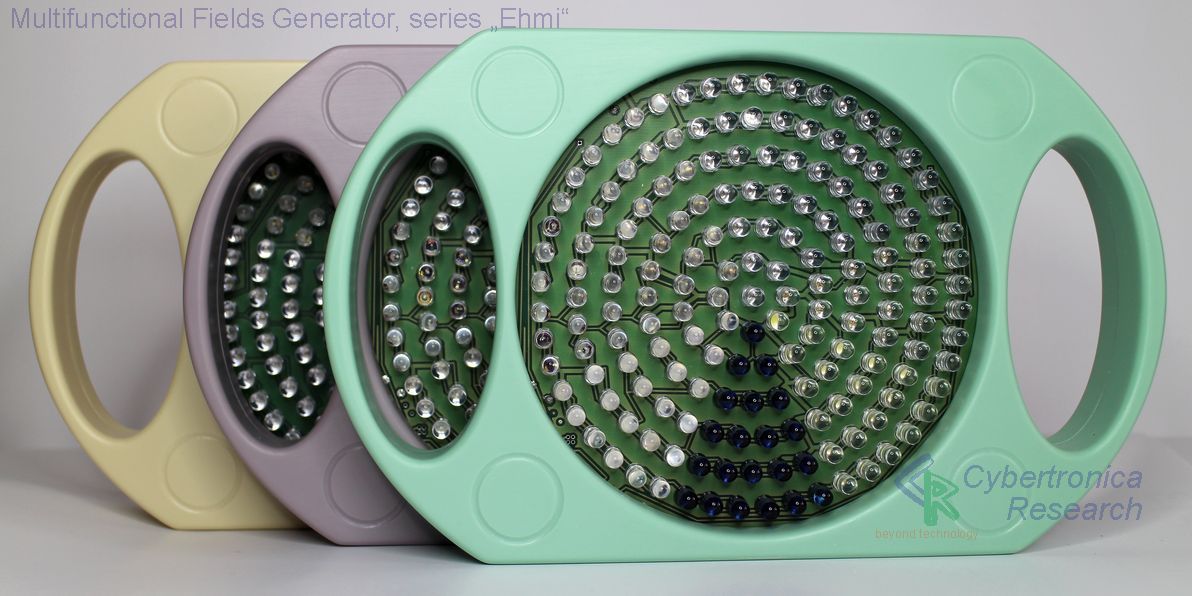Multifunctional Fields Generator, series "EHMI" 3x-4x
Main features:
Multifunctional Fields Generator is a patented device capable of producing electric and magnetic components of EM fields as well as several experimental effects:
Components of EM fields:
- AC magnetic field, modulation: low frequency I: 1Hz-100Hz, low frequency II: 1kHz-300kHz
- AC electric field, modulation: low frequency I: 1Hz-100Hz, low frequency II: 1kHz-300kHz
- Multi-spectral LED light, wavelength: 390nm - 960nm
Experimental effects:
- Magnetic vector potential A
- High-penetrating component of LED emission
- Emission produced by screw-forming elements and polarized polymers
The generator has a digital microcontroller with several programmable modes and is designed for short- or long- term experiments. It is powered from AC adapter (110-230V), for programming purposes it has USB 2.0 interface to connect to a standard PC/laptop.
- Programmable on/off times
- Programmable frequencies for AC magnetic/electric fields
- Programmable spectral light/frequencies
- Programmable switching between different generated fields
There are several modifications - handheld, stationary as well as only with a few components (e.g. only with the LED or A vector potential parts) and firmware options (manually controlled or fully automatic).
Application areas
All produced low-frequency EM fields and experimental effects are biologically active - this device is developed for experimental purposes in diverse biological areas (laboratory or field conditions). Read more about:
- Impact of extremely low and ultra-low frequencies of EM fields
- Impact of spectral LED light on plants
- Impact of LED light and weak EM-fields on animals/honeybees
- Impact of LED light and weak EM fields on grapevine
- Impact of weak modulated signals on ion transfer and electric double layers in biological cells
- Impact of non-electromagnetic (sound/ultrasound/longitudnal) waves on cellular information transfer
- A vector potential (Aharonov-Bohm effect) and its biological impact
- High penetrating components of LED and laser emission
In reference applications, this device - handheld or stationary version - was used for stimulation of germination/growth processes in cereals, pre-sowing preparation of seeds, treatment of several animal deceases (broiler farm), treatment of milk and cereals products, medical and biological academic research. Beside biological applications, this device can be used for exploration of experimental features, for instance a long-range signal transmission (with EDL sensors).
References
Different elements of this device are in multiple tests from middle 80x - early 90x up to now, primarily in former Soviet Union (and after in such countries as Russia, Ukraine, Moldova, Kazakhstan etc.) and Germany. The research organizations are Institutes of national Academies of Science, Universities, later on - research and commercial companies, medical centres, agricultural and livestock farms. In parallel, many tests are performed by private researchers. There are a large number of publications - conference contributions, journal papers and books - published in last 20 years.

